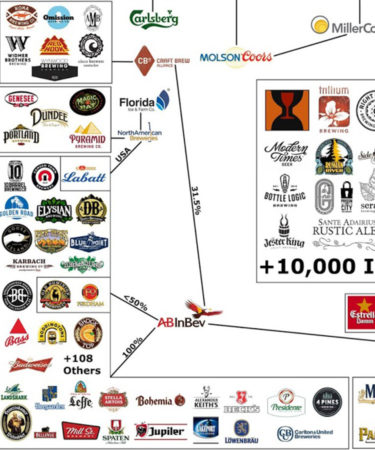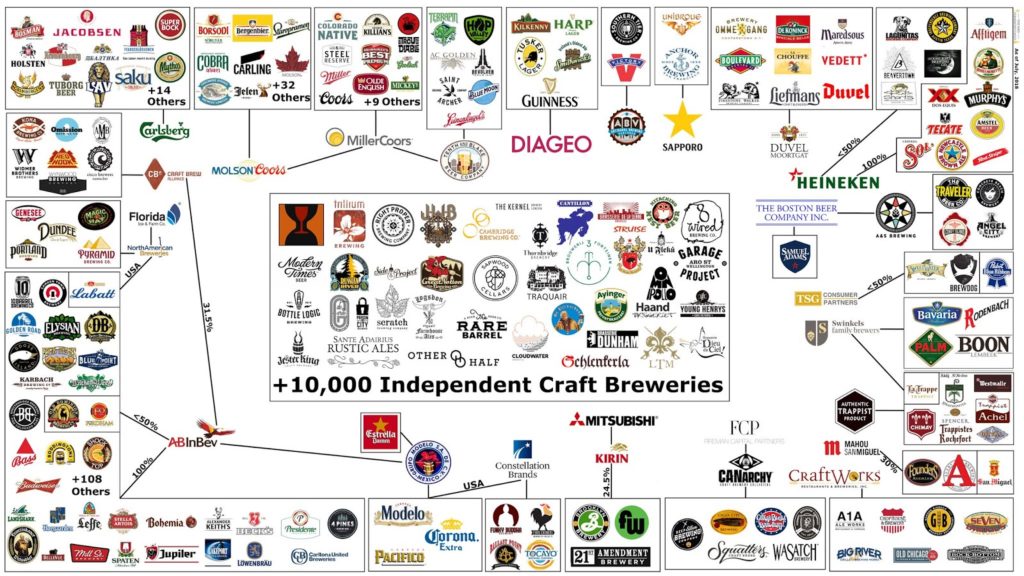Craft beer is an arbitrary term, these days, but the best definition we’ve got (and generally, what the industry depends on) is that of the Brewers Association, which defines a craft brewery as small (producing 6 million barrels of beer per year or less); independent (less than 25 percent owned by a larger alcohol company that isn’t a craft brewery); and traditional (beers are made with traditional or innovative brewing ingredients and their fermentation, as opposed to flavored malt beverages).
Above all, the key signifier of what makes a craft brewery is its independence. Yet as the number of breweries rises (currently well over 6,000 in the U.S.), so too do acquisitions of some of these breweries. As a result, beer drinkers are left unsure of exactly where the beer they’re buying is actually coming from.
The Mad Fermentationist beer blog created this handy infographic to clear up any confusion about what breweries are owned by larger companies. The chart is not exhaustive, nor perfect. For example, not every brewery owned by AB InBev is included in the graphic (understandably so, as there are well over 100 of them), and as Paste points out, Pilsner Urquell is actually owned by Asahi. The chart is also inclusive of breweries owned by global brewers like Anheuser-Busch InBev or MillerCoors, which are not considered “craft,” as well as those owned by brewers like Duvel-Moortgat, which are.
But it’s a helpful way to visualize, in the words of its creator, Michael Tonsmeire, “the complex web of brewery ownership.”

